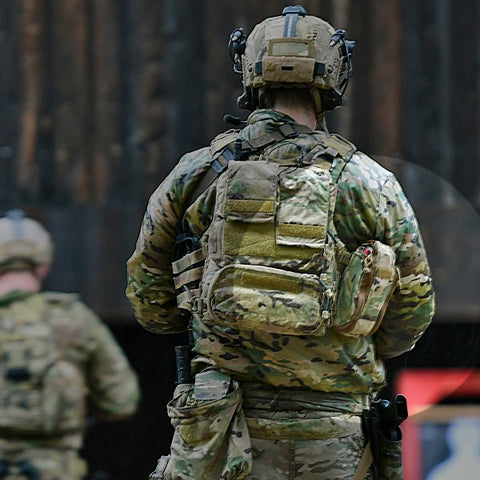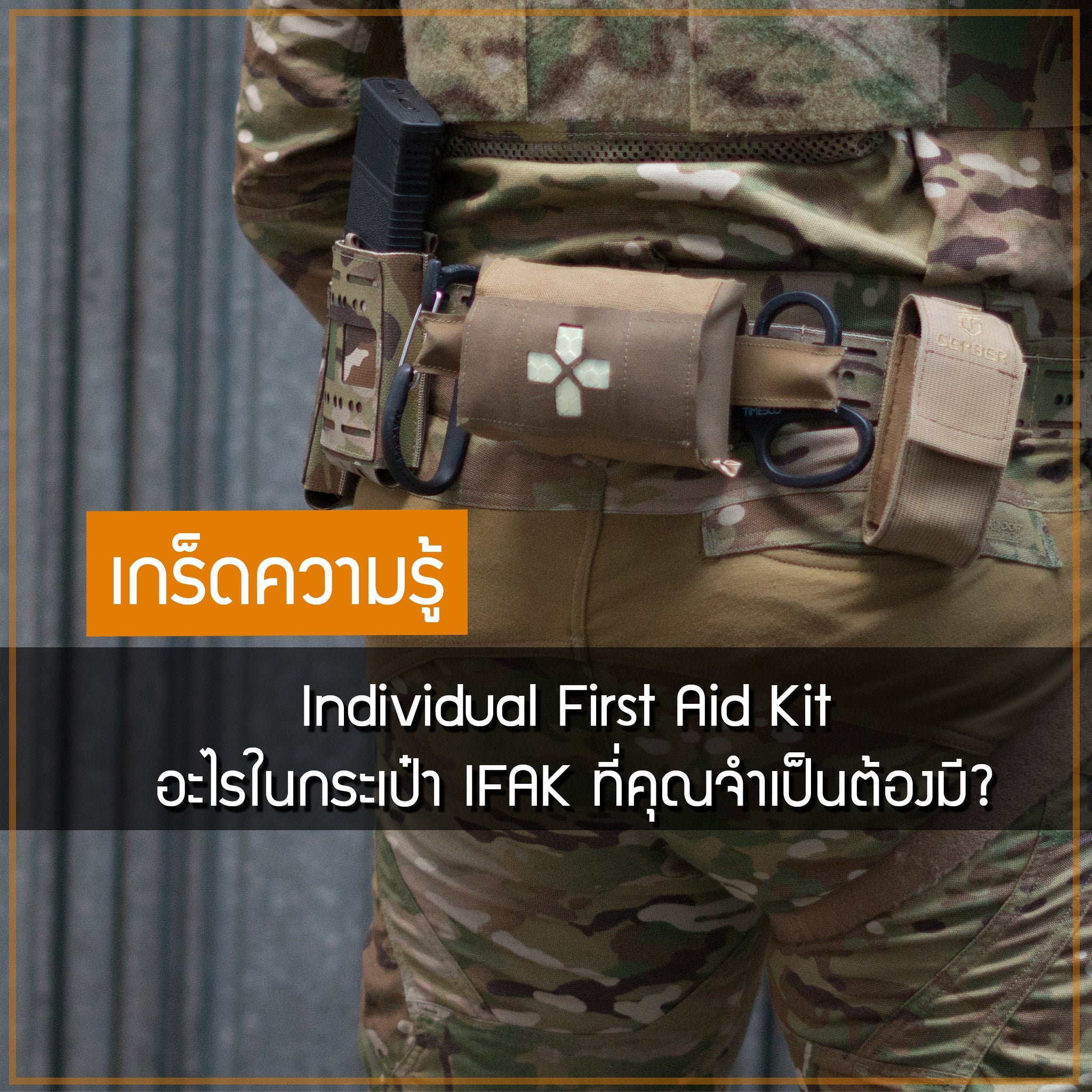2 points from a veteran medic
Axiom 1: In some situations, superior firepower is the best medicine.
Axiom 2: The best medicine, if taken at the wrong time, is also the worst medicine.
INDIVIDUAL FIRST AID KIT - IFAK (Individual First Aid Kit)
From now on, I will call it "IFAK" for short.

In fact, every soldier and officer should always carry an IFAK.
(1st Line Gear - The equipment that is arranged for the first or routine operation.)
At most, one set is enough to provide first aid if necessary.
You don't want anything more than that, which will only add to your burden and weight.
The duty of carrying the mobile ICU room should be left to the real medical personnel.
What you should know is that most first aid kit manufacturers
Always stuff more equipment into an IFAK bag than necessary.
There are many manufacturers and types of devices.
But what should you carry with you?

The variable that makes IFAK useful is not the number of items in the bag.
Or what's in that bag? But what's important is you, the one who carries it everywhere.
To use IFAK effectively,
Basic first aid knowledge is required.
and the ability to decide what should be used where and when
According to the second postulate
Things to keep in mind
First of all, IFAK, as the name suggests, is a personal first aid kit.
Which is enough to save the life of the wearer.
The second is the discipline to constantly review and learn how to use IFAK.
If you have an IFAK with you but lack the skills to use it,
Or modifying the IFAK device will be useless.

And 2-3 more tidbits to help you decide:
What are the essentials that you should always carry with you?
1) 85% of deaths are from incidents that are classified as rescueable.
On the battlefield, it is bleeding from an open wound.
Following that idea, it shows that 85% of the devices are in your IFAK.
It should be a device that can effectively stop bleeding.

The next 9% of deaths are due to pneumothorax.
Most of the cases are caused by gunshot wounds to the chest or abdomen.
So the other 9% in your IFAK kit should be a lung puncture.

And the remaining 8% will have other symptoms that follow, such as a rapid drop in body temperature.
Due to the large amount of blood loss
2) If 2 equals 1, 1 equals none, then 6 equals safe.
The author of this article got an idea from a military officer who said:
You should carry at least three tourniquets.
Line 1 for yourself
Line 2 for friends
The third line is a backup line.
Which I have no argument about, because we are talking about preparing equipment.
Be prepared to deal with events we don't want to happen.

3. You can be prepared, but you have to know how to distinguish things.
Painkillers, anti-inflammatory drugs, sunscreen, and things like that.
It is not a contraindication, but it is a symptom that can be anticipated.
It does not involve life or death and does not need to be used immediately.
And it doesn't help you survive the battle.
So you can separate it and put it in your backpack, and it will still be available in time.
The bottom line is that IFAK is attached to 1st Line Gear.
It should be something that can stop your bleeding.
Learn to understand it, practice it, get comfortable with your equipment.
At least one important thing is gauze (it would be better if it is the kind that contains a blood-stopping agent).
and tourniquet
Finally, you should carry or install the IFAK bag where both hands can reach it.
Because you never know when one hand may stop working, and there is still another hand available to save your life.
Source: https://sofrep.com/gear/ifak-what-do-you-really-need/
Article: INDIVIDUAL FIRST AID KIT (IFAK) – WHAT DO YOU REALLY NEED?
Translated by: Thithat Rinchai on November 12, 2020


